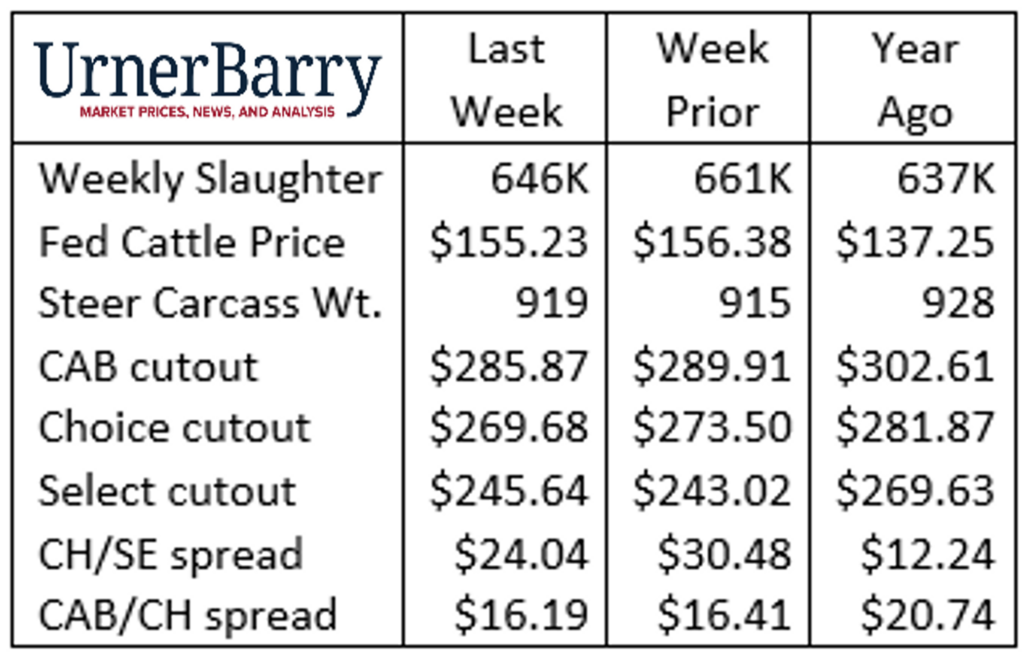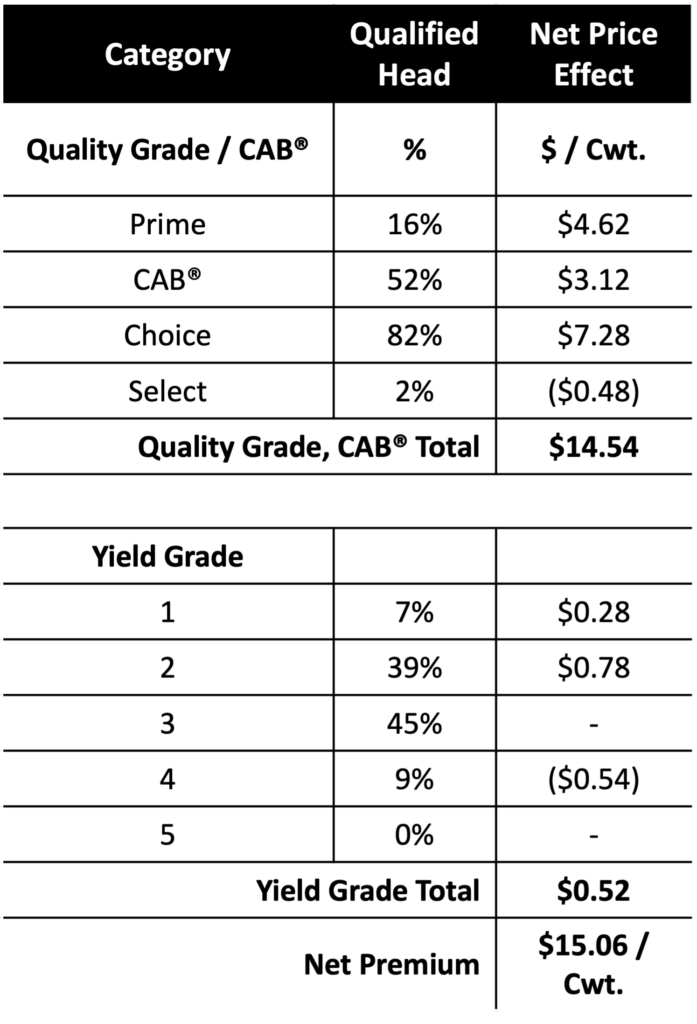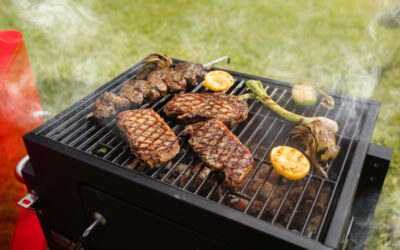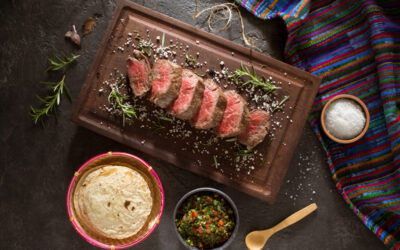

MARKET UPDATE
Fed cattle slaughter was encumbered last week due to very large snowfall totals in Nebraska. Wednesday’s total was down 10% at just 90K head and Thursday’s total was down 6K head, roughly 6% compared to the 99K head daily potential observed recently. We’d anticipate a big slaughter week to make up some of that difference this week, but keep in mind that packers may be happier to pace themselves during January. The typically lower beef demand month has started to show signs of faltering cutout values and the supply chain need for beef tonnage is not as rampant as in December.
The cash fed cattle market was uninspired last week in continuation of the lackluster January theme. The weekly average price was down more than $1/cwt. and cattle futures were lower, pulling market psychology down with it.
Feedlot conditions in Nebraska, Colorado and Kansas have turned sloppy with daily freeze/thaw cycles decreasing cattle performance and feed efficiency. These conditions also tend to build some negativity into feedlot management psychology. Live weight sales also become less numerous as dressing carcass yield is increasingly difficult to estimate.
Carcass cutout values are mixed in last week’s report with the Select cutout showing a $2.62/cwt. increase while Choice was down $3.82/cwt. and CAB was $4.04/cwt. lower. The quality price spreads logically retreat from lofty December levels in the month of January. As we’ve highlighted in the past number of weeks the premiums for elevated marbling including CAB acceptance and Prime have been historically high.
The January 1 Cattle on Feed report was not quite as bullish as analysts expected. The 8% year-on-year marketing pace decline for the month of December was a point or two short of the more aggressive projections but bodes well for cattlemen as the outlook for tight fed cattle supplies this spring continues to build on the two prior months’ lower placement data.
The December fed cattle marketing pace was also restricted at 6% lower than a year ago. The summary effect of both lower placements and marketings kept the cattle on feed number just 3% lower than January 1, 2022, at 11.68 million head.
From a beef end-user perspective, this news is much less promising as customers will be caught short on their product needs, especially those that are less apt to maintain a continual book of business with wholesale suppliers.
Fed Cattle Projections Factor in Carcass Value
The math used to calculate feeder cattle purchase price requires very few numbers and simple arithmetic. Starting with a target fed cattle finished weight minus feeder cattle purchased weight reveals pounds of feedlot gain. Multiply a current cost of gain projection ($/lb.) by the pounds of required feedlot weight gain then reveals the feedlot cost. Several variables within the feeding phase affect the cost of gain figure, generating pen-specific costs unique to health, genetics, weather and feed cost dynamics. However, cattle feeders can quickly distill some of the known and unknown qualities of a set of feeder cattle they’ll use to adjust their cost of gain projection up or down by a few percent. Using the projected CME Live Cattle futures month in which the cattle will finish provides a current finished price projection that could be hedged the same day the cattle are purchased. Thus, projected sale price minus feedlot cost reveals the dollars one could pay for the feeder animal to break even.
That rudimentary review is simply a setup for the discussion often shared surrounding high feeder cattle prices. Among cattlemen who understand the above math, the question becomes: “How are these feeder cattle bringing so much money?” Mind you, it depends a lot on one’s perspective and sector as to whether or not this conversation comes up. After all, prices are highly variable, as are cattle and regional supply/demand dynamics.
Some buyers may have a heightened need to fulfill a given head count of a specific quality and class of cattle, which may drive their price ceiling above what a simple breakeven calculation would recommend. Others, however, are factoring in a higher return based on better-than-projected feedlot performance and/or carcass quality premiums than average.
Focusing on carcass quality in today’s fed cattle pricing environment highlights the latter of the two phenomena. For instance, a recently closed out pen of 148 head of heifers capitalized on a much better-than-average carcass return. The heifers graded 16% Prime, 52% CAB with the remaining 30% low Choice and 2% Select. The yield grade side of the ledger featured just 9% Yield Grade (YG) 4 discounts, 7% YG 1, 39% YG 2 and 45% YG 3. There were no heavyweight discounts in the pen.
In relation to industry averages the YGs for these heifers are just barely better than the latest published USDA numbers. Relatively small grid premiums and discounts across the YG 2 through 4 ended up impacting the net price/cwt. across the pen by only +$0.52/cwt. It’s a win to be in a net black ink position regarding YG, but it didn’t move the profit needle much.
Quality grade and CAB premiums, however, changed the revenue picture quite a lot. The $20/cwt. Prime premium, $6/cwt. CAB premium values stacked on top of the $24/cwt. Choice/Select spread made those quality attributes very attractive. Since all but 2% of the heifers were Choice or better, the net starting carcass price was $6.80/cwt. above the regional average weighted cash price. That’s a big boost right out of the gate for this pen in a market scenario where historically wide Choice/Select price spreads have been present since July.
Superior marbling and CAB certification at high levels brought the quality premiums to $14.54/cwt. dressed price. The YG bump brought the net carcass premium to $15.06/cwt. across the pen, or $133.43/head.
We don’t know the purchase price or in-weight of these cattle so readers can simply calculate the $/cwt. impact that $133 per head equates to on a feeder heifer. It’s not a small number whether it be a four-weight or an eight-weight heifer. There’s a difference!
Read More CAB Insider
Progress, Not Complacency
Beef demand has been exceptional because of dramatic increases in consumer satisfaction for a few decades. Since taste ranks at the top of the list when it comes to what drives consumers to choose beef, we know where our figurative “bread is buttered.”
Cutout and Quality Strong
Summer weather has begun to set in with more regions of the country set to experience hotter temperatures. This means the traditional turning of consumer focus toward hamburgers and hot dogs rather than steaks, the spring favorite.
Onward with Quality
It’s been a quality-rich season in the fed cattle business with added days on feed and heavier weights continue to push quality grades higher.





